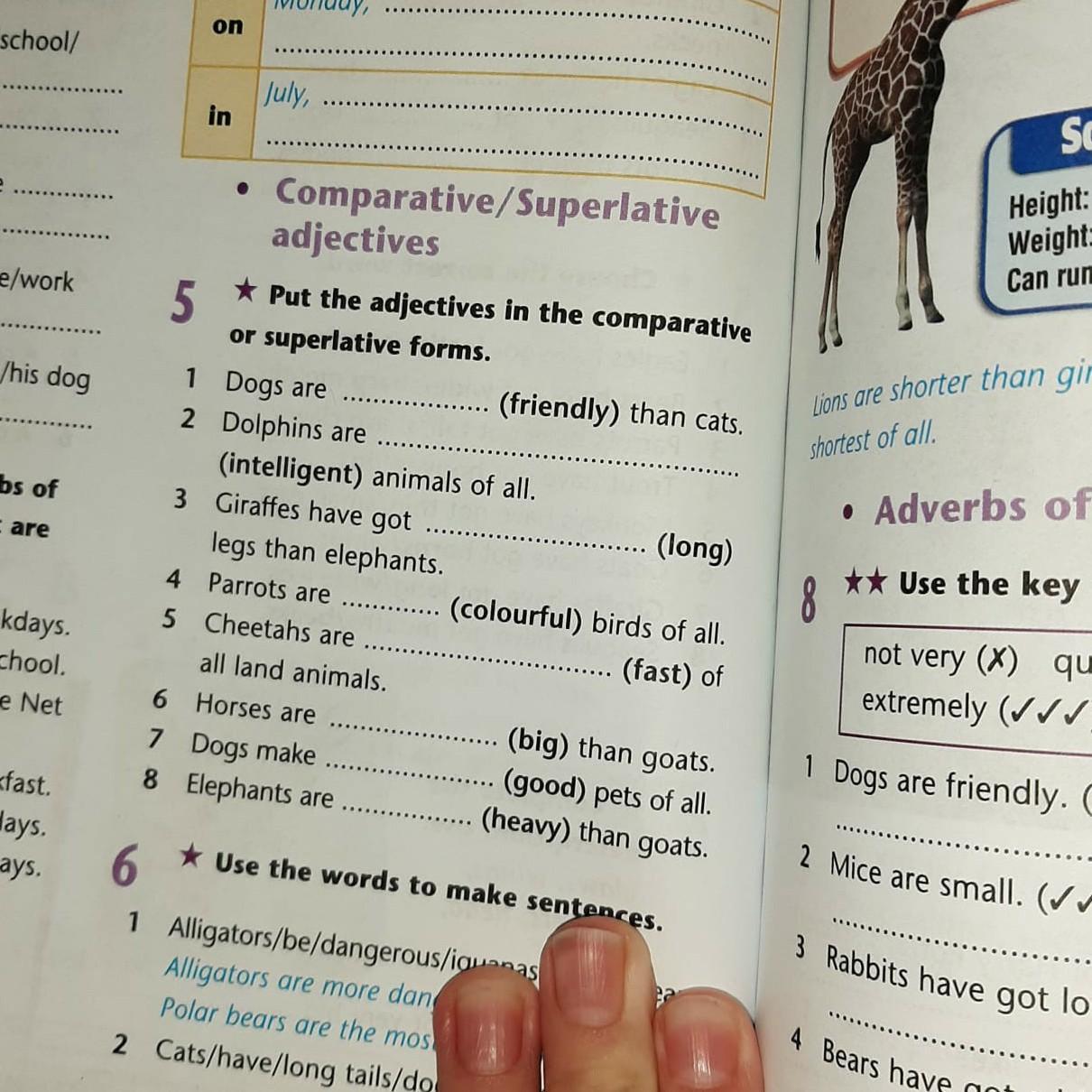Предмет: Английский язык,
автор: cildebaevaajsara
помогите)))))))))???
Приложения:

Ответы
Автор ответа:
0
1) Friendlier
2) The most intillegent
3) Longer
4) The most colorful
5) Fastest
6) Bigger
7) Best
8) Heavier
Автор ответа:
1
Ответ:
1 frendlier
2 most intelligent
3 longer
4 most colorful
5 most fast
6 biger
7 better
7 havier
Объяснение:сравнение имеет 3 стадии, в 1 обычное прил. Во 2 добавляется er в 3 (превосходной) most и первая форма, но есть исключ
stas1914:
не most fast, a faster
и bigger с двумя g
Похожие вопросы
Предмет: Русский язык,
автор: бомжичек
Предмет: Английский язык,
автор: 1979101
Предмет: Русский язык,
автор: SimpsonAsya
Предмет: Українська мова,
автор: kamilagolub999
Предмет: Английский язык,
автор: liza110846